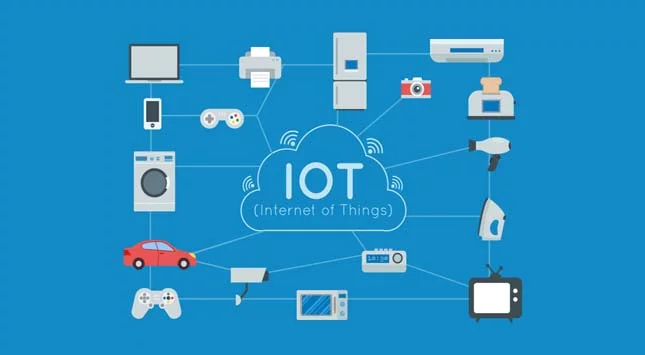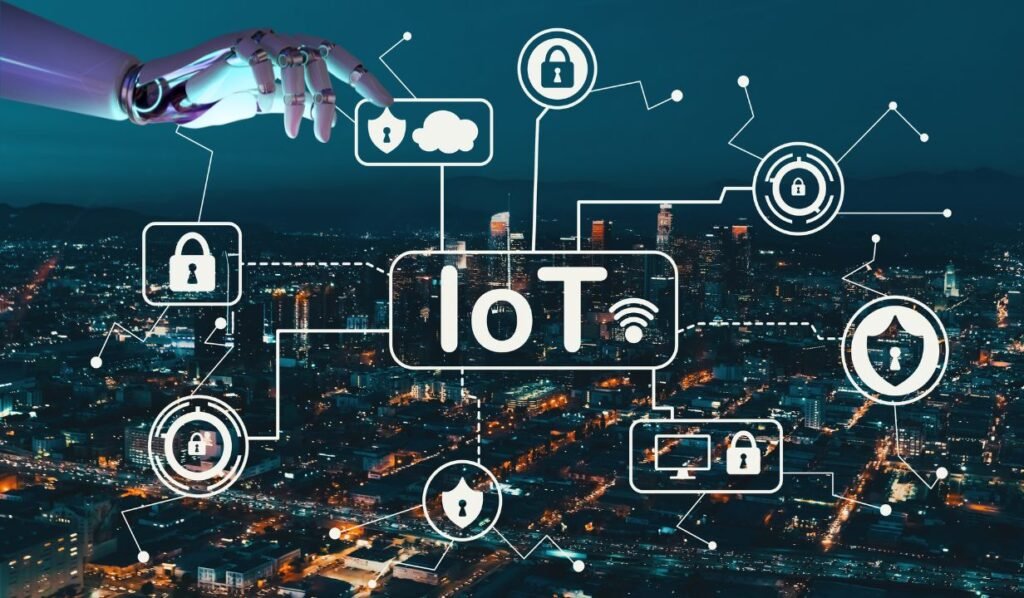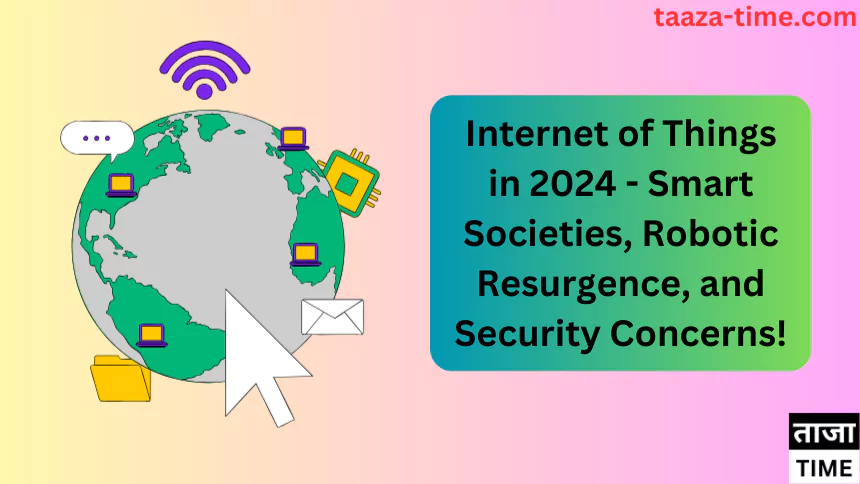Revolutionizing Tomorrow: Anticipating the Internet of Things in 2024 unfolds a future of Smart Societies, Robotic Resurgence, and Security Concerns. Brace for interconnected living, AI-driven industries, and the imperative for robust safeguards in the ever-evolving landscape.
More and more smart devices are filling our homes and workplaces, making the Internet of Things (IoT) a regular part of our lives. But the exciting part is that the world of IoT is always changing. Let’s take a peek into 2024 and see what experts think about the cool things and challenges coming our way!
Eric Purcell, the big boss of global partner sales at Cradlepoint, believes that the IoT will finally make our cities, malls, and businesses super smart. Imagine everything from smart buildings to managing traffic and parking becoming seamless. In 2024, industries will use IoT devices more to make things work better, connect faster, and give us awesome experiences. We might start to see the beginning of a ‘smart society’ in malls, public transport, and modern businesses.

Anticipating the Internet of Things in 2024
Felix Zhang, the brain behind Pudu Robotics, predicts that the IoT will be a big part of a new age of robots. If 2023 was all about Gen AI, 2024 is going to be the year of the robot! As robots get smarter with advanced technology and Gen AI, we’ll spot them not just in restaurants and warehouses but also in stores, hospitals, and even taking care of seniors in homes. These robots will become more in control with IoT, using elevators, managing lights, and doing cool things with smart home devices. Get ready to see robots opening up new possibilities in 2024!
Watch out! Kevin Kumpf, the cybersecurity expert leading the charge at Cyolo, has a crucial piece of advice—it’s a bit of a balancing act.
In the upcoming year, industries are gearing up for increased challenges in securing their Operational Technology (OT) and Industrial Control Systems (ICS). The culprit? A surge in the use of Industrial Internet of Things (IIoT) devices. These devices, part of the technological revolution, have played a significant role in making factories smarter, safer, and more efficient. Imagine AI and machine learning driving innovations like automated factory lighting, monitoring vital signs and performance metrics, and boosting overall worker safety. Even heavy machinery with built-in AI and robotic canines are joining the manufacturing workforce, ensuring both efficiency and worker safety.

But here’s the twist: the more we embrace these IIoT devices, the more vulnerable our organizations become to cyber threats. Smart factories generate a vast amount of critical data, and effectively analyzing and securing this wealth of information is becoming increasingly challenging. Failing to do so not only hampers optimization but also exposes organizations to the risk of cyberattacks. As we move into the upcoming year and beyond, there’s a growing demand for experts in OT security. The catch? There’s a shortage of skilled professionals in this field, making organizations actively seek the right talent, especially as they continue integrating these vulnerable smart technologies into their environments.
Yaniv Vardi, who is the CEO at Claroty, believes that generative AI can help manage data from IoT devices. According to him, generative AI will make cyber-physical systems stronger against cyber threats that use AI. With the rise in the number of IoT devices, there is a lot of data available. Generative AI can use this data to improve security and provide better insights for operations. It will also automate tasks and give a clearer view of potential attacks. This will help defenders of cyber-physical systems be better prepared for harmful attacks.
Mike Nelson, the vice president of digital trust at DigiCert, predicts that devices will become more resistant to tampering. As the world becomes more mobile and dynamic, the security of devices becomes crucial. With personal identity often linked to smartphones and other devices, Nelson suggests that the identity of each device and person should be specialized and protected. This will involve using identity and operational checks to confirm authenticity, ensuring that individuals can confidently interact with secure and tamper-resistant devices. Trust in IoT will increase, creating more opportunities for sensitive uses like electric vehicle chargers and medical devices.
Ellen Boehm, who is the SVP of IoT strategy and operations at Keyfactor, believes that cryptography will play a role in this. Similar to how AI has sped up marketing content, Boehm thinks AI can help developers work faster on designs and innovative features. However, she cautions that using an AI engine brings challenges in proving the origin and authenticity of code changes over time. If AI-based code development relies on an unknown source, it could introduce new security vulnerabilities into IoT products.
Rajeev Gupta, the co-founder and chief product officer at the cyber insurance company Cowbell, points out that the increasing connectivity of IoT devices may create new vulnerabilities. This makes cybersecurity measures even more crucial. Gupta predicts a growing demand for insurance coverage related to security breaches in IoT.
Tom Gorup, the security guru at Edgio, has a bold prediction: brace yourselves for an IoT-driven storm of DDoS attacks! Picture this: businesses have been grappling with DDoS attacks for ages, and the bad news is, they’re not about to catch a break. In fact, if we peek into the crystal ball of current trends and cutting-edge tech, it seems DDoS attacks are gearing up to be bigger, badder, and more frequent by the time 2024 rolls around.
So, why the impending chaos? Cyber baddies now have an arsenal of colossal resources to unleash havoc. They’re infiltrating web servers left and right, cooking up massive layer 7 or DDoS attacks that pack a serious punch.
But wait, there’s more! Thanks to the Internet of Things (IoT), our world is becoming more interconnected than ever. Picture a cyber-criminal playground where they can exploit IoT devices to orchestrate massive botnets for DDoS attacks. Brace yourself, because predictions say we’ll have a whopping 38.5 billion IoT devices by 2025—basically handing cyber villains an all-you-can-attack buffet.
Seth Blank, the tech wizard at Valimail, sees a twist in the tale. As email security tightens its belt, he foresees attackers sneaking into other, less secure communication channels—think SMS, phone calls, and IoT talk. It’s like a game of cybersecurity chess, where attackers keep changing their moves.
Debbie Gordon, the maestro behind Cloud Range, echoes the sentiment. With IoT devices connecting to the internet like there’s no tomorrow and a lack of clear security rules, cyber threats are lining up at the door, threatening personal security.
But fear not! Shankar Somasundaram, the mastermind at Asimily, believes healthcare organizations, drowning in a sea of internet-connected devices, will rise to the occasion. In 2024, he envisions a heroic shift towards risk-first strategies. By wielding the power of IoT device visibility, these healthcare heroes will prioritize tackling the 5-10% of vulnerabilities that scream “immediate danger.” It’s a budget-friendly, resource-optimized approach to outsmart cyber villains and ensure the safety of our digital world. So, buckle up, because the future of cybersecurity sounds like one epic rollercoaster ride.






























